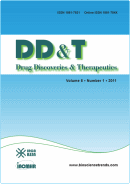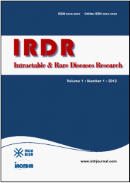Intractable Rare Dis Res. 2025;14(1):46-54. (DOI: 10.5582/irdr.2024.01067)
Evaluating the impact of mandibular developmental abnormalities and distraction osteogenesis on swallowing function in Pierre Robin Sequence
Chen Y, Chen YJ, Huang JL, Chen ZZ, Cui YQ
This study aims to evaluate the relationship between mandibular developmental abnormalities and swallowing function in children with Pierre Robin Sequence (PRS). Swallowing function was assessed by a Modified Kubota Drinking Test (MKDT). Pre- and postoperative CT scans of PRS patients who underwent Mandibular Distraction Osteogenesis (MDO) were analyzed through three-dimensional (3D) digital reconstruction technology. Mandibular and airway evaluation parameters were measured, including the distance between bilateral mandibular angular, the length of bilateral mandibular ramus, mandibular notch angle (α), mandibular angle (β), mandibular body angle (γ), and the lateral and longitudinal dimensions of the posterior lingual airway. Results showed that the length of the bilateral mandibular rami and posterior lingual airway dimensions were significantly reduced postoperatively compared to controls (p < 0.01). After MDO, the length of mandibular rami and lateral retroglossal airway dimensions increased, α and β angles increased, while γ angle decreased (p < 0.05). Notably, the distance between bilateral mandibular angles, mandibular rami length, and lateral retroglossal airway dimensions had the strongest impact on swallowing score. In conclusion, mandibular width, length, and airway dimensions were closely linked to swallowing function in PRS patients. MDO effectively improved mandibular hypoplasia, improved swallowing dysfunction, and significantly enhanced quality of life for the patients.







